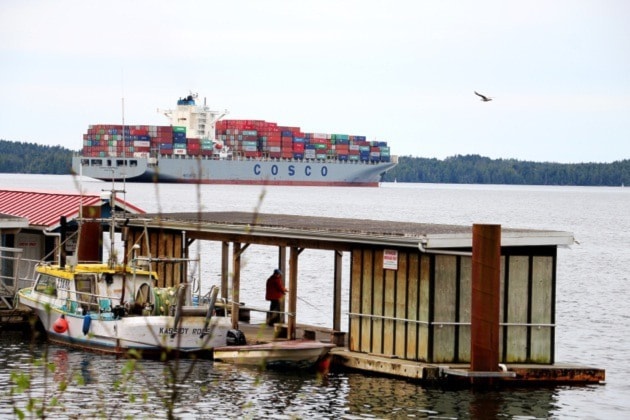Results from a half-million dollar study on Prince Rupert’s airshed has been delayed by more than a year by the provincial government and the opposition is curious about why it has taken so long.
The province announced the $500,000 scientific airshed study in Dec. 2014, and in its press release stated it expected to have a final report submitted by May 15, 2015.
“Conclusions from the study will be used to inform environmental assessment work as well as future permitting and regulatory decisions for LNG and other industrial proponents in the Prince Rupert airshed,” the press release stated.
More than a year later — after the deadline for the Pacific NorthWest LNG environmental assessment report to the Canadian Environmental Assessment Agency (CEAA) came and went — the results of the airshed study remain elusive.
“Where’s the report?” asked MLA Jennifer Rice in a letter to the Minister of Environment Mary Polak in Sept. 2015 and pressured the ministry again in question period on July 28.
“We haven’t been given any inclination, a reason or a rationale with the exception of getting a letter from the minister that they needed more time to consult with stakeholders,” Rice said. “It’s important because a lot of the information can feed into the environmental assessments of other projects. Had this report been released on time it could have fed into the Pacific NorthWest LNG project.”
As a result, the CEAA is still waiting for information from the province’s airshed study and the agency proposed a vague draft condition to the proponent regarding air quality stating that it should implement the best technology and management practices to control air emissions during all phases of the project to mitigate adverse environmental effects.
In the draft environmental report by Pacific NorthWest LNG in Feb. 2016, it stated that it is expected to take part in the provincial airshed study that will assess the impacts of emissions on vegetation, soils, surface water and human health — but what those impacts may be within the airshed have yet to be released.
To get some sense of what the airshed is like in Prince Rupert, Ken Shaw, a geography professor at Northwest Community College explained that the airshed has certain characteristics to it that explains how well the air mixes in the region.
“Most of the time we’re famous for rain. We have low pressure systems coming in so we have pretty good air exchange,” Shaw said. In the winter, usually around January when the city gets a cold spell, the airshed experiences an inversion, or a high pressure system.
“If you look at smoke coming out of a chimney, when there’s an inversion it’ll go up a certain way and then it’ll just flatten out. On a rainy Rupert day that goes up and it just leaves.”
The Ministry of the Environment gave an update on the airshed study. “Based on a review of the initial data it was determined further analysis was needed,” the ministry said in an email.
“The most recent draft of the study is undergoing review with stakeholders and First Nations and is expected to be publicly released this fall,” the ministry said.
